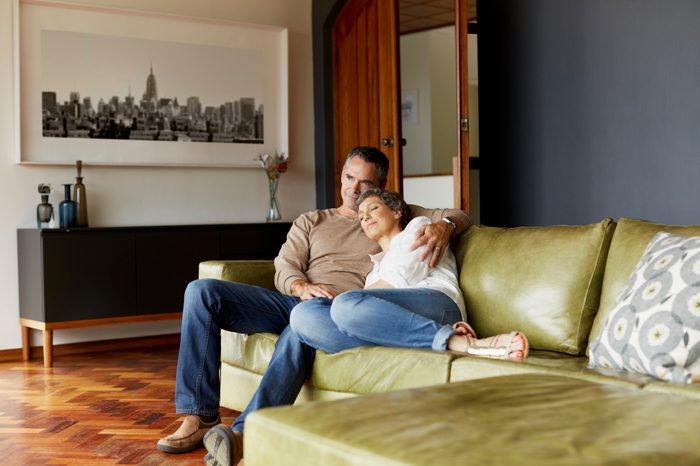
You spend too much time on the couch
The bone disease osteoporosis, which occurs as you lose bone mass and bone quality, affects 1.5 million Canadians, according to the Government of Canada. If you live a sedentary lifestyle you may be inadvertently increasing your chances of osteoporosis. “Bone is a living tissue and responds to load,” says Jonathan Lee, MD, an attending physician of orthopedics at Montefiore Health System in the Bronx, New York. Loading is when you put enough weight on bones with activities like walking, weight-lifting, and playing tennis to stimulate bone-building cells.
“For bone, the more you use it, the more it will adapt and strengthen. Likewise, if it is not subjected to loading, it will waste away,” says Lee. Studies in astronauts proved this: The weightless environment in space actually caused them to lose bone mass. The solution for us here on Earth? Weight-bearing exercise. “Make sure that the exercise you choose actually loads your skeleton—while swimming has many wonderful health benefits, your bones are not loaded,” Dr. Lee says. “An activity such as walking might be better for osteoporosis prevention.”
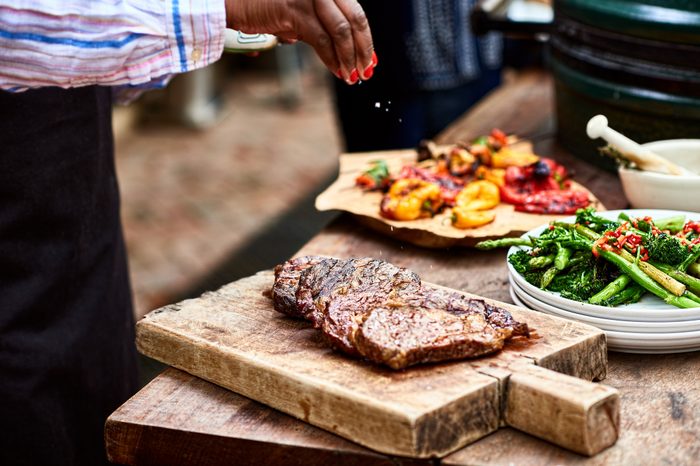
You love your steak
A Paleo diet or other protein-focused eating plans like Atkins could be bad for your bones. Even if you aren’t following that kind of plan, you’re probably consuming too much meat. How this affects bones reflects the delicate balance of your body’s different systems. “High-protein diets can cause the kidneys to excrete more calcium,” says Dr. Lee. “Since calcium is one of the primary building blocks of bone, this calcium loss can contribute to decreased bone mineral density,” which can lead to osteoporosis. (Keep an eye out for these signs of a calcium deficiency.)
However, some studies have shown protein causes the body to absorb more calcium, which is why there is extra to excrete. But as with most foods, it’s still best to eat meat in moderation.
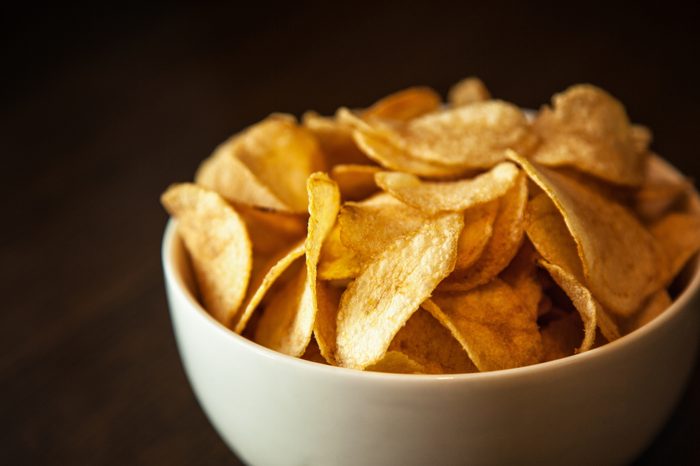
You eat salty snacks
Another dietary factor that could be contributing to bone loss is too much salt. “High salt intake increases blood pressure,” Dr. Lee explains. “As the kidneys work to excrete the sodium, calcium is also removed from the bloodstream.” A study from Japan presented at a meeting of The Endocrine Society showed that postmenopausal women who had high sodium intake were four times more likely to have a non-spinal fracture than those with low sodium intake.
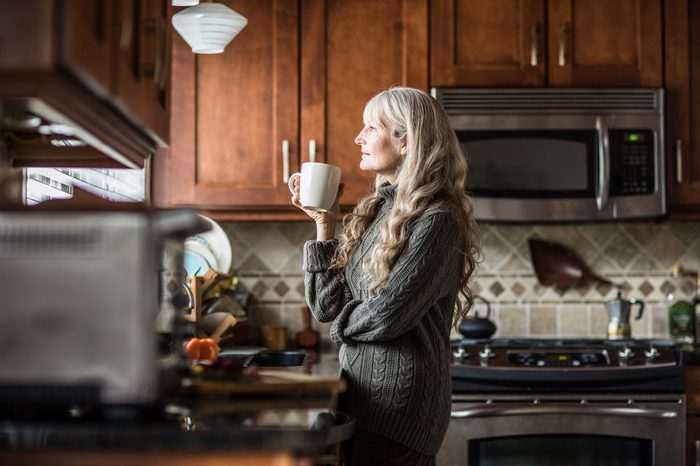
You avoid sunlight like a vampire
Although sunscreen is crucial to reduce skin cancer risk, we still need vitamin D to help process calcium. “Vitamin D is required for the body to successfully absorb and use calcium, one of the fundamental building blocks of bone,” Dr. Lee says. “Most people, especially in colder climates, do not get enough sun exposure to generate enough natural vitamin D, and thus supplementation is essential.” According to the National Osteoporosis Foundation, adults under 50 need 400-800 IU of vitamin D daily, and adults over 50 need 800-1,000 IU daily. Talk to your doctor about your specific needs based on where you live, what time of year it, is and which vitamin D-rich foods you eat. Keep in mind, vitamin D deficiency signs may not be obvious.
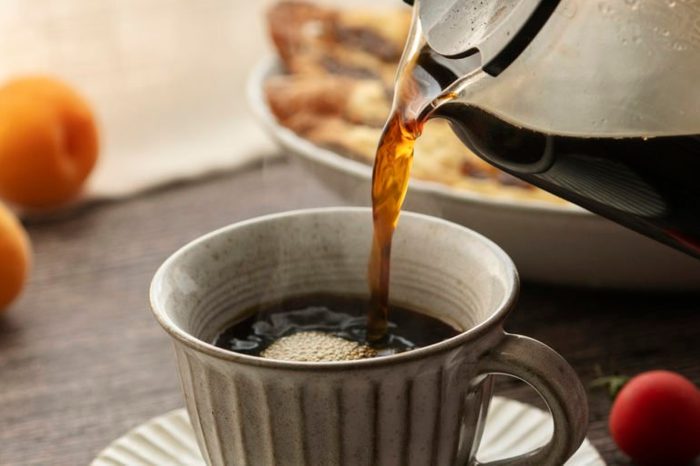
You can’t function without java
Coffee seems to be good for you one month, then bad the next. Dr. Lee says that how caffeine affects bones really seems to be more of a potential issue for older women. “The researchers who studied the mechanism for why caffeine might contribute to bone loss seem to conclude that the effects really only occur in the absence of significant amounts of estrogen, so it might be more of a problem in post-menopausal women,” he says. “However, I would not get bent out of shape on this one as I don’t think there is enough conclusive evidence to quit your morning cup of coffee, regardless of your age.” But, if you have other risk factors or you drink multiple cups a day, you might consider cutting down. (For a coffee substitute, try this caffeine-free bevvy.)
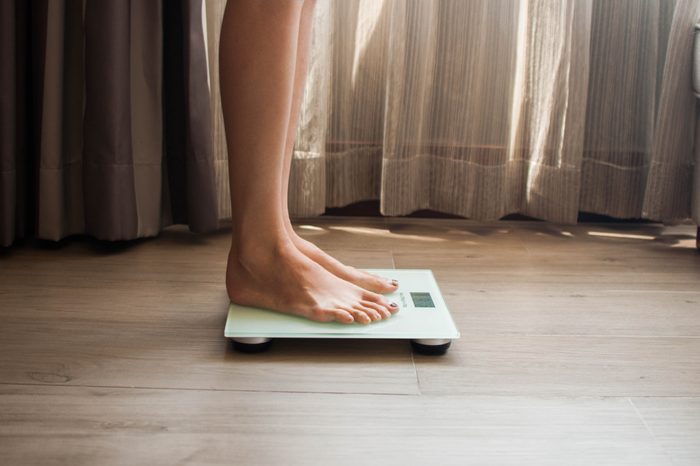
You’re losing a lot of weight
While getting to a healthy weight is good, losing too much weight can be very bad for your bones. “As with exercise, the bones need to be adequately loaded in order to stimulate them enough to respond to the load and generate more biomechanically ‘good’ bone,” Dr. Lee says. “Body mass index less than 19 is considered a risk factor for osteoporosis.” According to a study from the Harvard School of Public Health, just a one-unit increase in BMI (approximately five to eight pounds) decreased the risk of bone loss a whopping 12 percent, a “greater magnitude than most other modifiable risk factors,“ according to the study’s authors. Dr. Lee also points out that “those who are underweight might also be suffering from malnutrition, which could contribute to osteoporosis as well.” Here are some things you can do every day to boost your bone health.
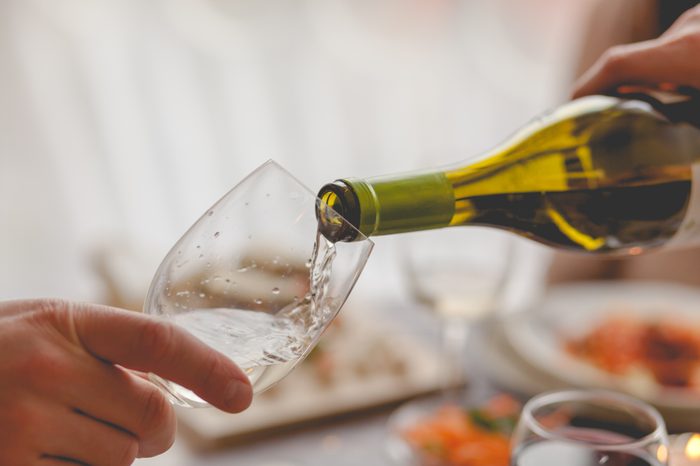
You unwind with wine
Low levels of alcohol consumption may actually be good for your bones, according to a study from the University of Oregon, but more than a couple of drinks a day has the opposite effect. “Too much alcohol can make it harder for the GI tract to absorb calcium,” Dr. Lee says. “It also affects the pancreas and liver, influencing both calcium and vitamin D.” Alcohol can also impact different hormones in the body. “Cortisol levels can increase, and this can lead to lower bone mineral density,” Dr. Lee says. “In women in particular, higher alcohol consumption can decrease estrogen levels, and this can also lead to osteoporosis. To top it all off, alcohol is directly toxic to osteoblasts, the cells that become bone cells.”
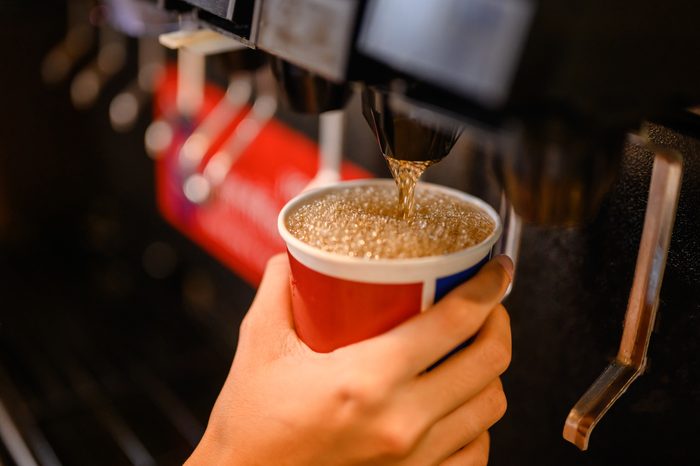
You have a weakness for soda
Some research has shown that sodas have been linked with bone loss, but the reasons why aren’t clear. Researchers from Tufts University found that women who regularly drank cola soda (three to four a day) had lower bone density in the hip (the research was published in The American Journal of Clinical Nutrition). Their theory is that it could be the caffeine or the levels of phosphoric acid, which can leach calcium from bones.
But Dr. Lee thinks there isn’t much evidence to prove the phosphoric acid theory. “Most experts now feel that it’s more likely that soda is replacing healthy calcium intake, rather than causing the problem,” he says. “For example, if someone drank a glass of milk instead of a glass of soda over a period of time, they probably would have a lower risk for osteoporosis.” If you do drink soda, make sure you’re getting enough calcium from other sources.
Next, find out how to decrease your risk of osteoporosis.
